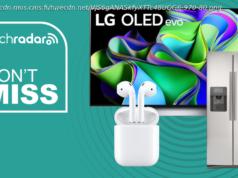Microsoft paved the way for Apple to take over an industry before. Will history repeat itself with AR/VR headsets?
Microsoft launched its Ignite conference today by demoing the VR meetings we all wish we’d been having for the past year. Its Mesh collaboration system, running on $3,500 HoloLens headsets, offers real-time « holographic » videoconferencing with avatars or motion-captured models. It’s quite similar to a third-party offering, Spatial, which we’ve seen at Qualcomm and Microsoft events for the past two years. We’ve even seen Spatial running on HoloLens. Collaboration is definitely a killer enterprise app for mixed reality, especially in our upcoming post-COVID world, where there may be a lot less business travel and a lot more working at home. The bigger issue is that AR/VR hardware strategies from Microsoft and everyone else seem to be stuck, and I suspect that (to their horror) only Apple will pull them out. In a lot of ways, it reminds me of the smartphone market in 2002 to 2005, when Microsoft dominated enterprise smartphones in the US with « Pocket PC » branded devices running Windows Mobile. Smartphones existed then! I was literally hired to cover them. My first smartphone roundup, in 2004, was quite the island of misfit toys. Along with Microsoft, a handful of other platform players jockeyed for position—the equivalent of today’s Valve and Oculus in VR. Then, between 2007 and 2009, a broad hardware transition (to capacitive touch screens) and network transition (to 3G) came, and it ultimately blew them all away. (A note here: I am appalled at how many AR/VR products I have called « game changers. » The game has not changed.)3 Big Problems for Glasses There are at least three problems that mixed reality needs to get past: hardware, network, and software.






